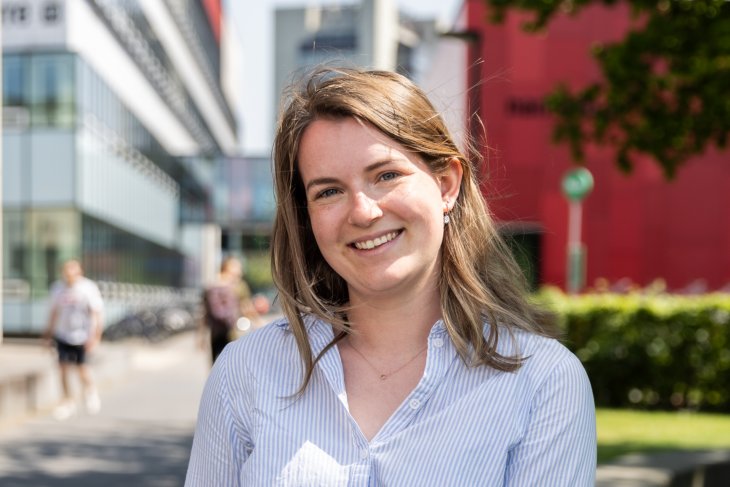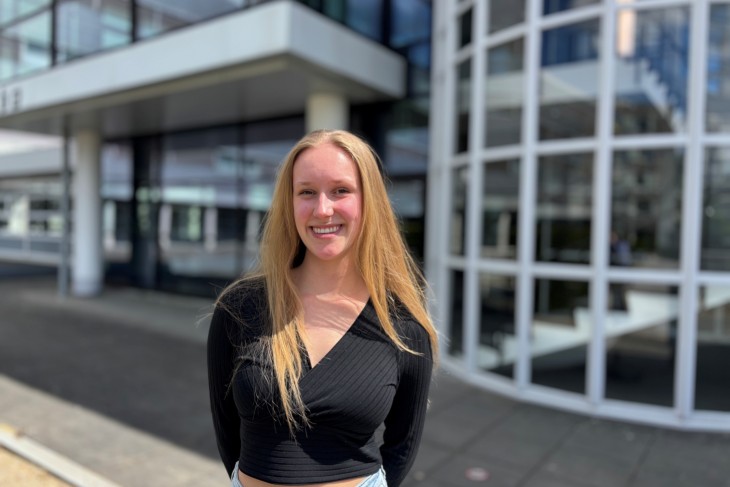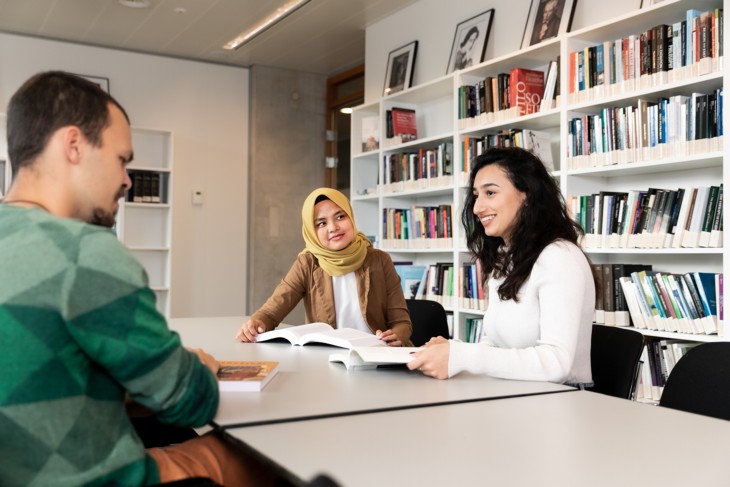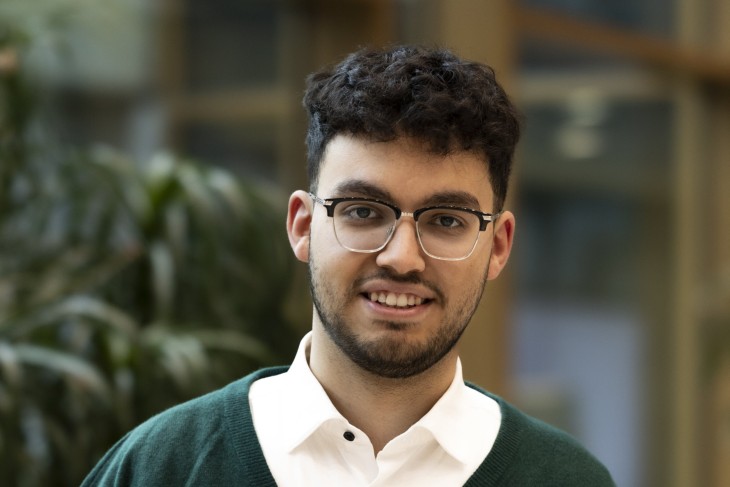“My dad has a knack for maths and logical thinking, so I guess it runs in the family. I excelled in Maths B in high school: my maths teacher would take 25 minutes to explain something, and I would often grasp it in just five minutes.
I signed up for a 'Student for a Day Experience' at the University of Twente where you experience what it's like to study the programme of your interest. You spend a day together with a first- or second-year student, attend a lecture, and ask your questions. Then I realised the programme had everything I wanted. It covers a wide range of mathematical topics, and it provides an in-depth understanding of theories while allowing you to apply them to real-world problems. For example, how can you reduce traffic congestion in a city using mathematical models?
Breaking down complexity
In every module, you learn specific mathematical theories and immediately apply them to projects. On the one hand, it's hard because you aren’t fully experienced in the theory yet, but you still have to apply it; on the other, the application makes it easier to understand it.
One area that fascinates me is queuing theory, it's a branch of maths that studies and models the act of waiting in lines. So, how can I use this in practice? One of my favourite projects involved optimising a hospital waiting room. I had to figure out how to efficiently manage different types of patients: emergency cases, scheduled appointments, and those who were already in the hospital but needed additional services like a scan. The challenge was to ensure that there were enough time slots available for emergency patients while managing the risk and time for other patients.
I recall a particularly challenging assignment focused on mathematical proofs. In maths, proving a theory is essential before you can apply it to solve problems in fields like computer science, physics, and engineering. The assignment required us to prove complex theorems, demanding a deep understanding of different proof methods and logical structures. Each theorem required a unique approach, and it wasn't always clear which method would work. We spent countless hours discussing strategies, testing ideas, and hitting dead ends. This process taught me that maths isn't just about getting the right answer: it’s about learning to think deeply, logically, and creatively.
When I nearly quit
My journey wasn't without its hardships. I struggled with burnout, and I took a year off from my studies. Fortunately, the support system at the university supported me throughout. The student association, study adviser, programme coordinator, and student psychologist: everyone was there to help.
I was on the verge of quitting my studies when my study adviser helped me create a manageable programme and supported me throughout this difficult period. I can't thank her enough; she is my hero. It's so important to seek help when you need it.
Teaching maths to inspire future generations
I want to make maths accessible and enjoyable for all students one day. In high school, I loved breaking down complex maths problems into simpler terms that my classmates could understand. So during my bachelor’s, I decided to use some of my elective space by taking a minor in teaching to explore my interest in becoming a maths teacher.
I worked at a high school, teaching students who often felt discouraged about maths. Although challenging and sometimes frustrating, this experience confirmed my passion for teaching. I plan to pursue a master’s in teaching – the Master’s in Science Education – alongside the Master’s in Applied Mathematics to combine my love for maths with my desire to teach: maths doesn’t need to be overwhelming, it can be fun.”




